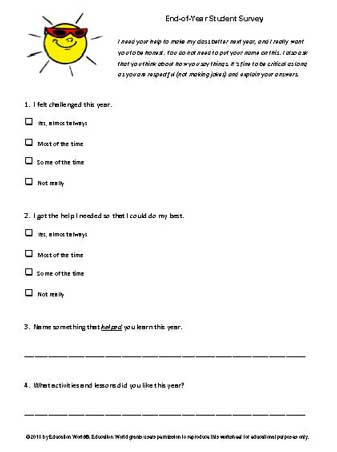How to Engage Students in a School Wellbeing Survey

A school wellbeing survey is a great way to gauge students’ emotional well-being. It also looks at their perceptions of fairness and belonging in the school community.
You can use it to identify and improve areas of concern. However, you should ensure that the surveys are confidential so that staff feel comfortable answering them.
Self-report questionnaires
Young people report high levels of subjective wellbeing, but many are struggling to achieve their potential. Identifying predictors of wellbeing is essential for developing targeted and universal interventions. The GSHS is a low-cost tool that collects information on young people’s health behaviour and protective factors across 10 key areas of concern. It is an integral component of the WHO European Region HBSC monitoring system.
The Student Subjective Wellbeing Questionnaire (SSWQ) is a 16-item self-report measure of school-specific subjective wellbeing. The instrument has been validated in the US with a large sample of adolescents in Grades 6-8 and found to have robust internal consistency, good reliability and to be convergent with other subjective wellbeing measures.
The SSWQ has also been adapted for the Polish context, and is currently being used in the GSHS study. We are investigating its ability to predict youth’s behavioural outcomes, including prosocial and antisocial behaviour and school performance, as well as their health-related behaviours such as nutrition habits and mental health problems.
Library questions
School librarians often provide services that help students develop their questioning skills. They also help students develop their own inquiry and research strategies. This is especially important in an environment where students are bombarded by information and have limited time to find what they need.
Moreover, libraries support the wellbeing of their whole school community by providing events such as author visits, Readers Cup competitions, hobby nights and more. This helps them to reinvigorate students’ curiosity and creativity, which Sir Ken Robinson fervently believes needs to be reinstated.
To include library questions in your survey, select the question from the block options menu and choose the folder you want it to be copied to (if no folder is selected, it will automatically be added to the default Uncategorized folder). If desired, change the question’s description. You can also select multiple questions at once by selecting them from the list. Then, click the “copy” icon to save the questions.
Online surveys
Using an online questionnaire is a cost-effective way to measure the wellbeing of students. It provides schools with valuable information about their students and allows them to identify any issues. It also allows them to improve their teaching and student support.
Online surveys allow students to provide feedback on a wide range of subjects, including their feelings about school and teachers. They can include questions that are multiple choice, Likert scale, or open. They also can be designed with a variety of data analysis techniques. For example, schools may use a graphical representation of the results to help them understand and interpret the data.
Educators should create clear governance policies on how survey data will be analyzed, reported, and used. They should also ensure that any third-party vendors or companies who have access to the data abide by these policies. This will ensure that the privacy of students is protected. It will also ensure that the school is complying with all relevant laws.
FAQs
Many schools use surveys to gather valuable data, but engagement with students around how the results are used is often overlooked. This resource introduces approaches to sharing survey results with students in a way that is meaningful and empowering.
The student survey asks about a range of topics, including their feelings about bullying, time spent with friends and family, sense of safety, and school involvement. The intermediate and senior versions of the survey also include questions about substance use, sexual health, and mental and physical illness.
The survey takes about 30 minutes of class time for each cohort of students to complete, and the results are available immediately. The individualized reporting helps schools identify areas of strength and challenge for their students and provide them with specific suggestions for next steps. Schools can also track progress over time by tracking student responses and comparing them to previous years. The survey can also be administered multiple times during the year.






